Carl F. Bucherer, a Peripheral Vision
A different way of doing things that is clever and visually appealing: the "Peripheral Vision" of Carl F. Bucherer.
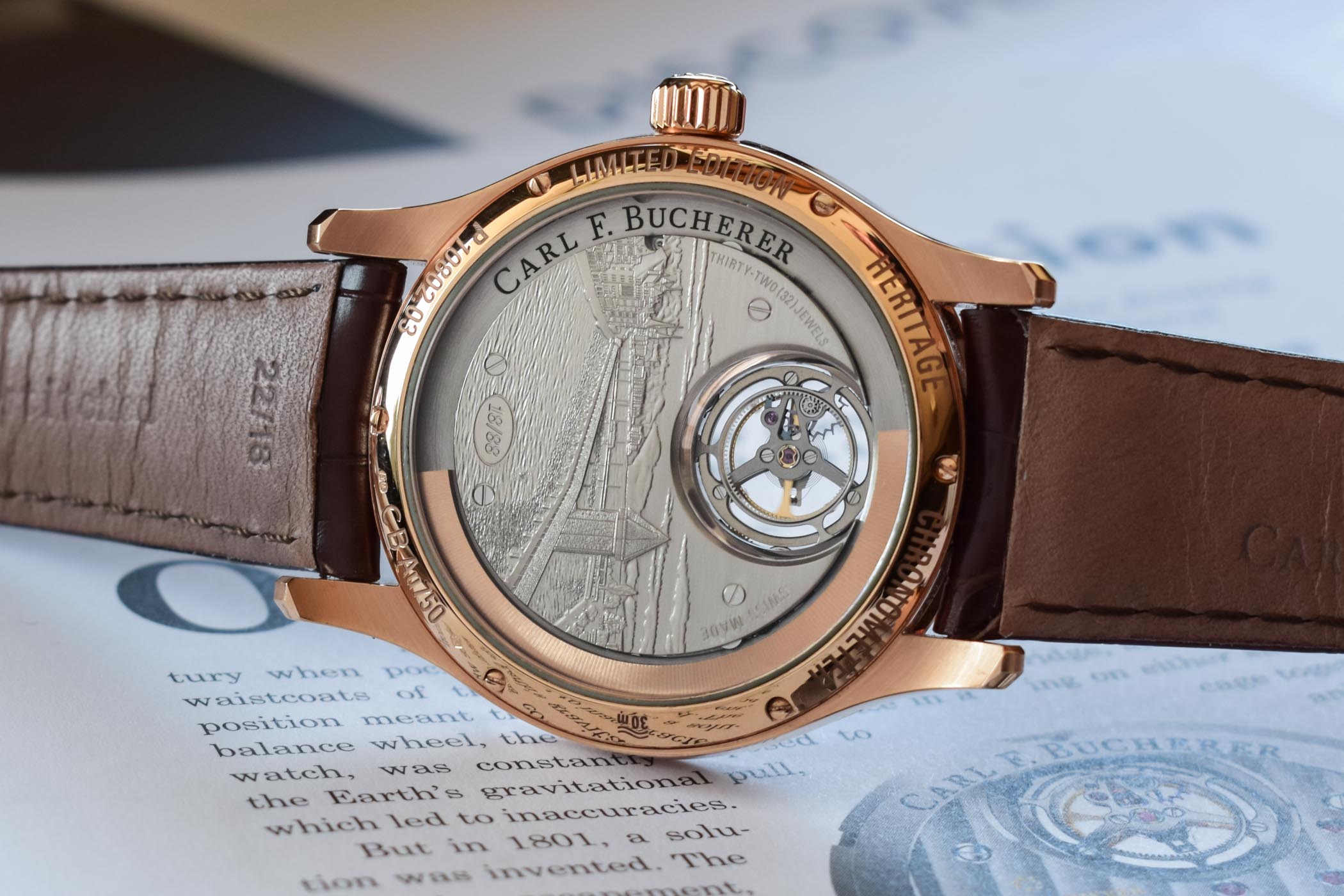
Some technical solutions “belong” to certain brands. Although Carl F. Bucherer is neither the creator nor the only brand to use peripheral winding movements, the Lucerne-based manufacturer can be said to have made the peripheral rotor a trademark technical solution. Better yet, Carl F. Bucherer presented its Double Peripheral Tourbillon in 2018, evidencing its desire to further explore peripheral systems. Let’s have a closer look.
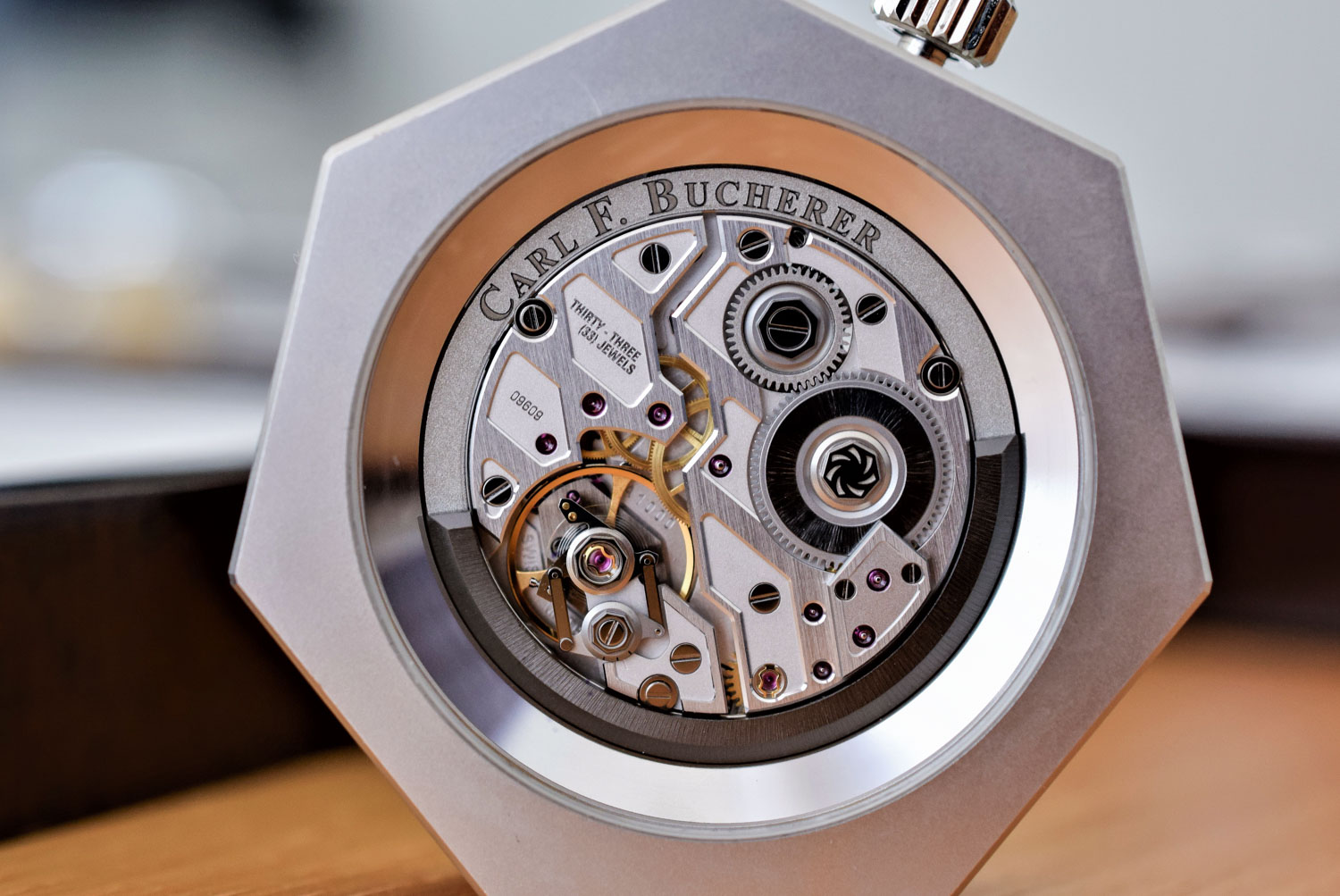
In most cases, rotating parts in watch movements are guided by pivots fixed on the plate or bridges. Cantilevered mountings are another solution. Peripheral mountings, whose parts rotate on their own periphery and are guided by rollers, are rare but becoming more and more fashionable. This has been made possible thanks to modern production methods and the advent of ceramic ball bearings that offer less friction and do not require lubrication.
Using peripheral systems for winding allows for thinner watches and an unobstructed view of the movement. The idea is not new and actually dates back to the 1950s. Still, Carl F. Bucherer needs to be credited as the brand that brought this smart technical solution to serial production and that kicked-off the trend for peripheral rotors.
Over the past years, CFB initiated a programme to research, develop and produce its own movements and technical solutions. In 2009, CFB presented the calibre A-1000 with a peripheral winding system. Instead of a centrally mounted rotor, the movement featured an innovative tungsten annular winding mass mounted and swinging around the movement. The concept relies on three small DLC-coated rollers with ceramic ball bearings, driving the peripheral rotor. The ceramic ball bearings require no lubrication and winding is bidirectional: the rotor supplies energy when turning in either direction, thanks to two clutch-wheels with clamp rollers (based on friction).
In 2016, the brand presented an evolution of this movement with the calibre A-2000, with an increased frequency of 4Hz (versus 3Hz on the A-1000) and a free-sprung balance with four inertia blocks. Winding is bidirectional and its barrel can store up to 55 hours of power reserve. These peripheral winding movements are used to power some of the elegant Manero collection models. Like all Carl F. Bucherer peripheral movements, it is fully developed and produced in-house in the brand’s manufacture in Lengnau.
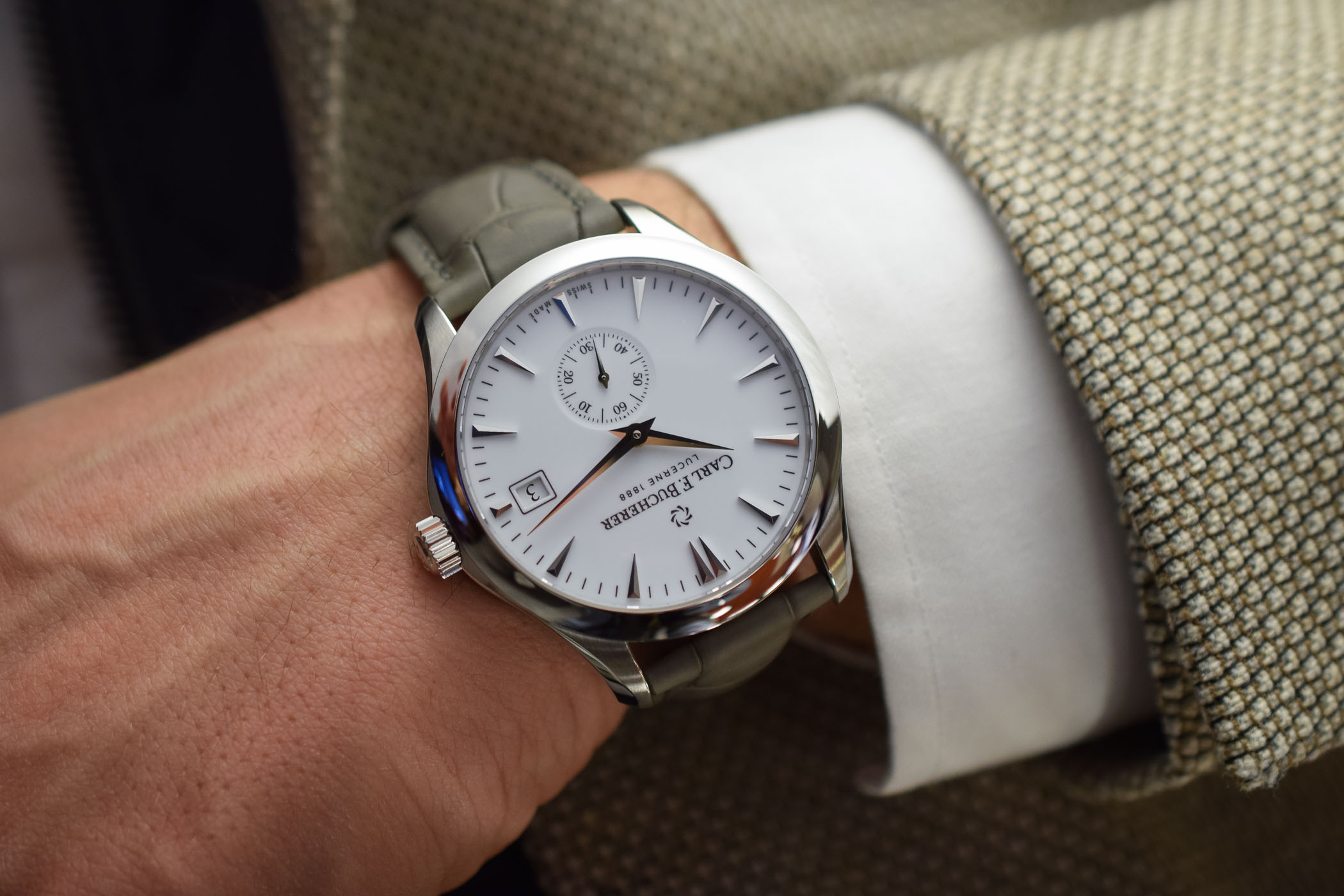
In 2018, Carl F. Bucherer pushed its peripheral concept even further with the presentation of the Manero Tourbillon Double Peripheral. Besides the trademark oscillating rotor, the watch features a peripheral tourbillon. Instead of using the traditional system of rotation around axis held between the main plate and a bridge, or a flying / cantilevered tourbillon, the tourbillon of the Calibre CFB T.3000 rotates between three miniature ball bearings. In an unusual fashion, the cage is prominently placed at 12 o’clock and it literally seems to be floating over the movement.
The automatic calibre CFB T.3000 is regulated to chronometer precision. The regulator beats at 3Hz and incorporates a silicon escape wheel and pallet. A useful but rare feature for a tourbillon, the movement is fitted with a stop-seconds mechanism. It allows you to start and stop the tourbillon cage for easy synchronization with a time signal.
In 2019, a limited-edition version of the Carl F. Bucherer Double Peripheral Tourbillon was released with the brand’s heritage collection. This new execution of the watch features a version of the movement that is more decorative, with the addition of a hand-engraved gold plate with a reproduction of the iconic Lucerne Chapel Bridge. The swan swimming in the waters is placed at a different place for each one of the watches, a nice touch making each watch truly unique.
For more information, please visit www.carl-f-bucherer.com.
Quick facts – Carl F. Bucherer Manero Peripheral 43mm: steel or 18k pink gold case – 43.1mm x 11.2mm – water-resistant to 30m – automatic calibre CFB A2050 – hours, minutes, small seconds and date – peripheral rotor – 55h power reserve – COSC chronometer certification – alligator strap on gold pin buckle – CHF 16,800 in gold, CHF 6,500 in steel
Quick facts – Carl F. Bucherer Heritage Double Peripheral Tourbillon: 18k pink gold case – 42.50mm x 11.90mm – water-resistant to 30m – automatic calibre CFB T3000 – hours, minutes, floating tourbillon – peripheral rotor – 65h power reserve – COSC chronometer certification – limited edition of 88 pieces – alligator strap on gold folding buckle – CHF 88,888

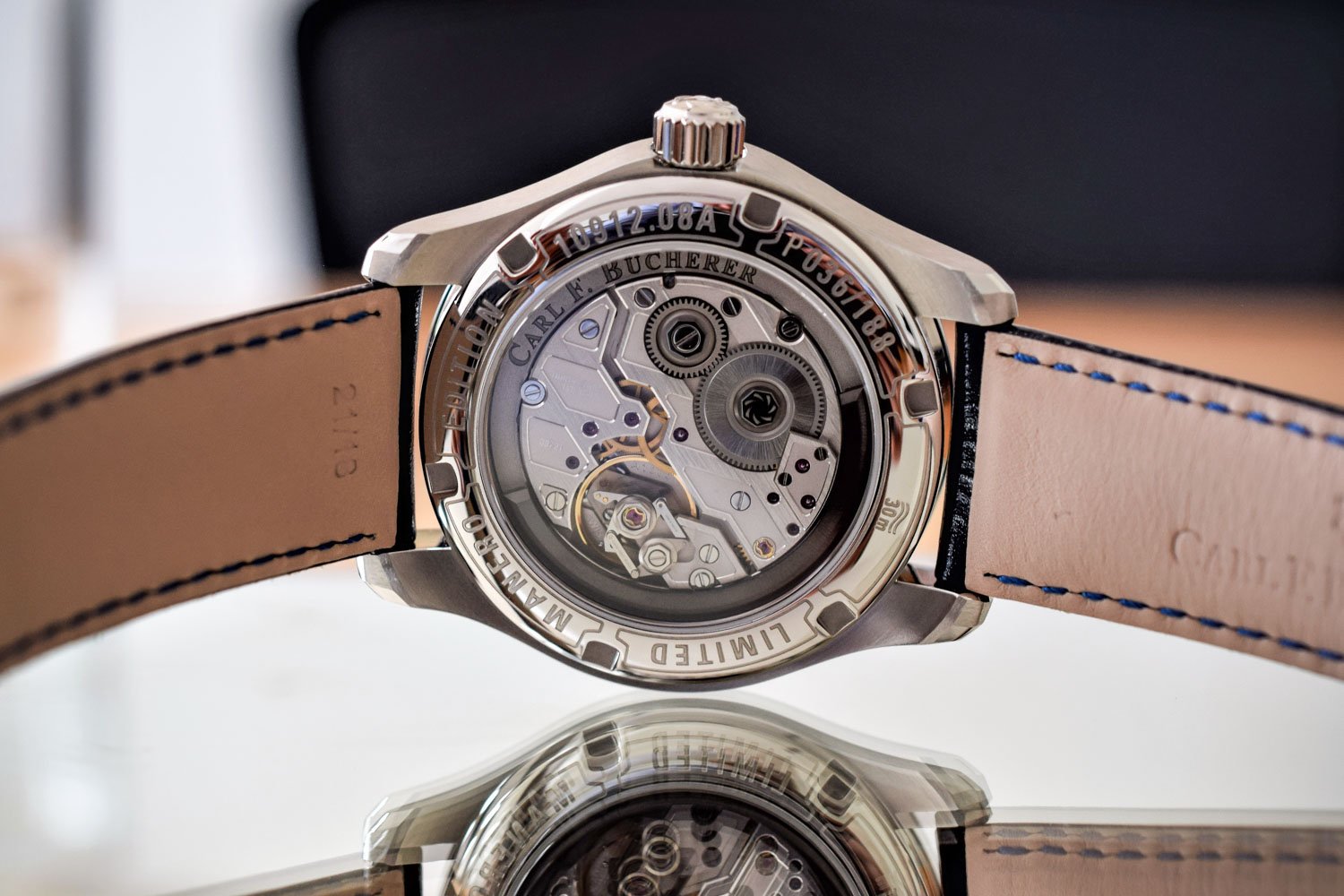
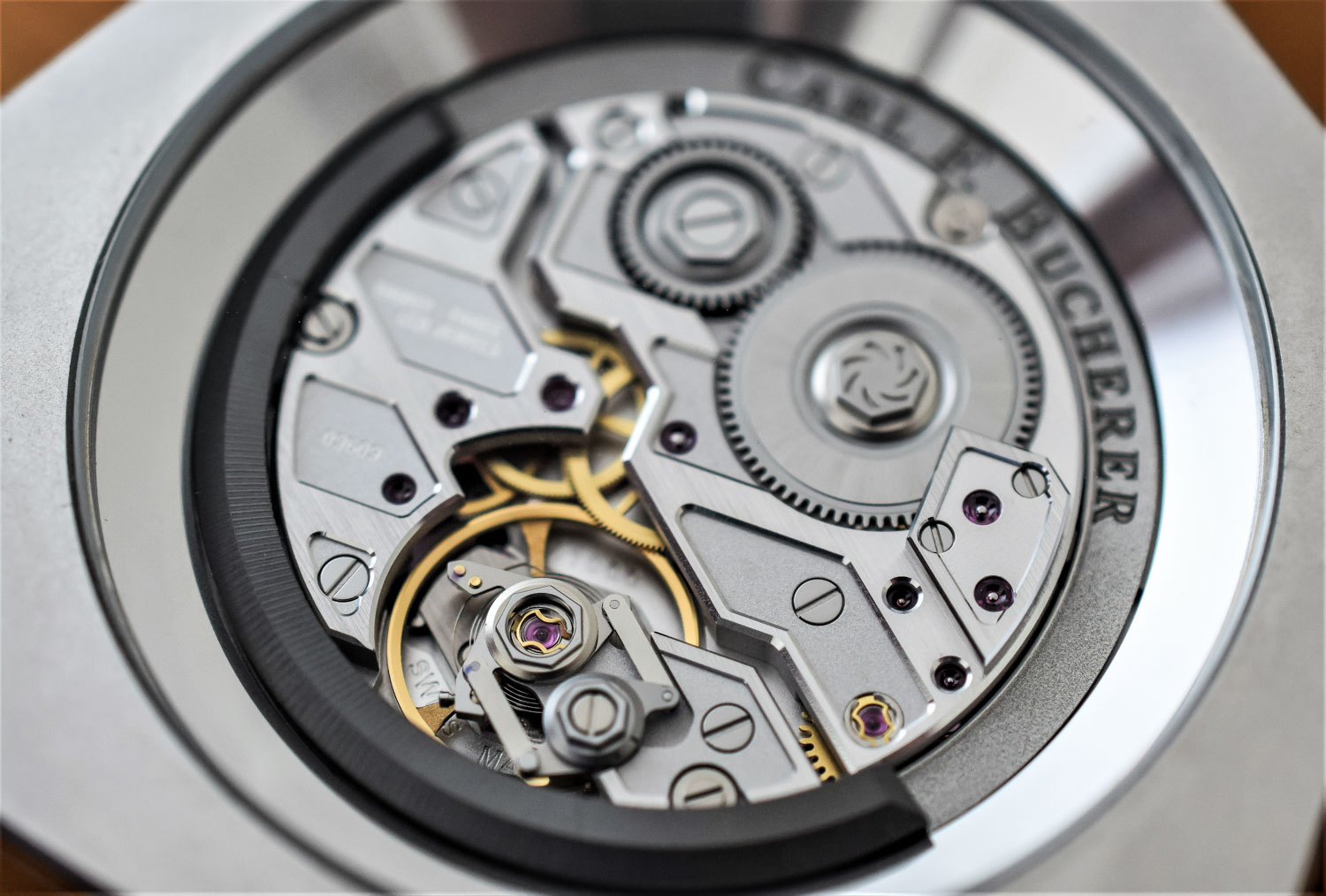
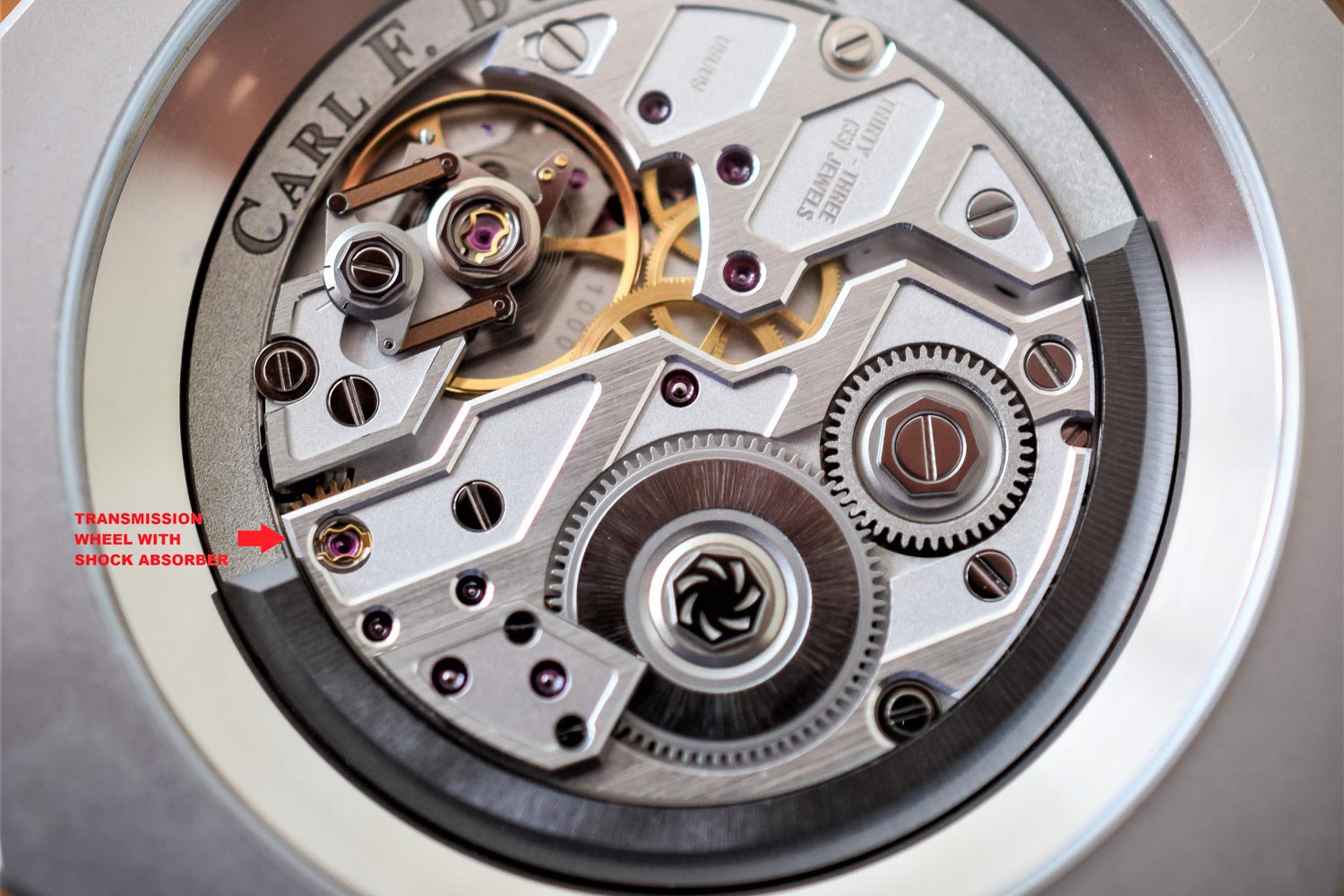
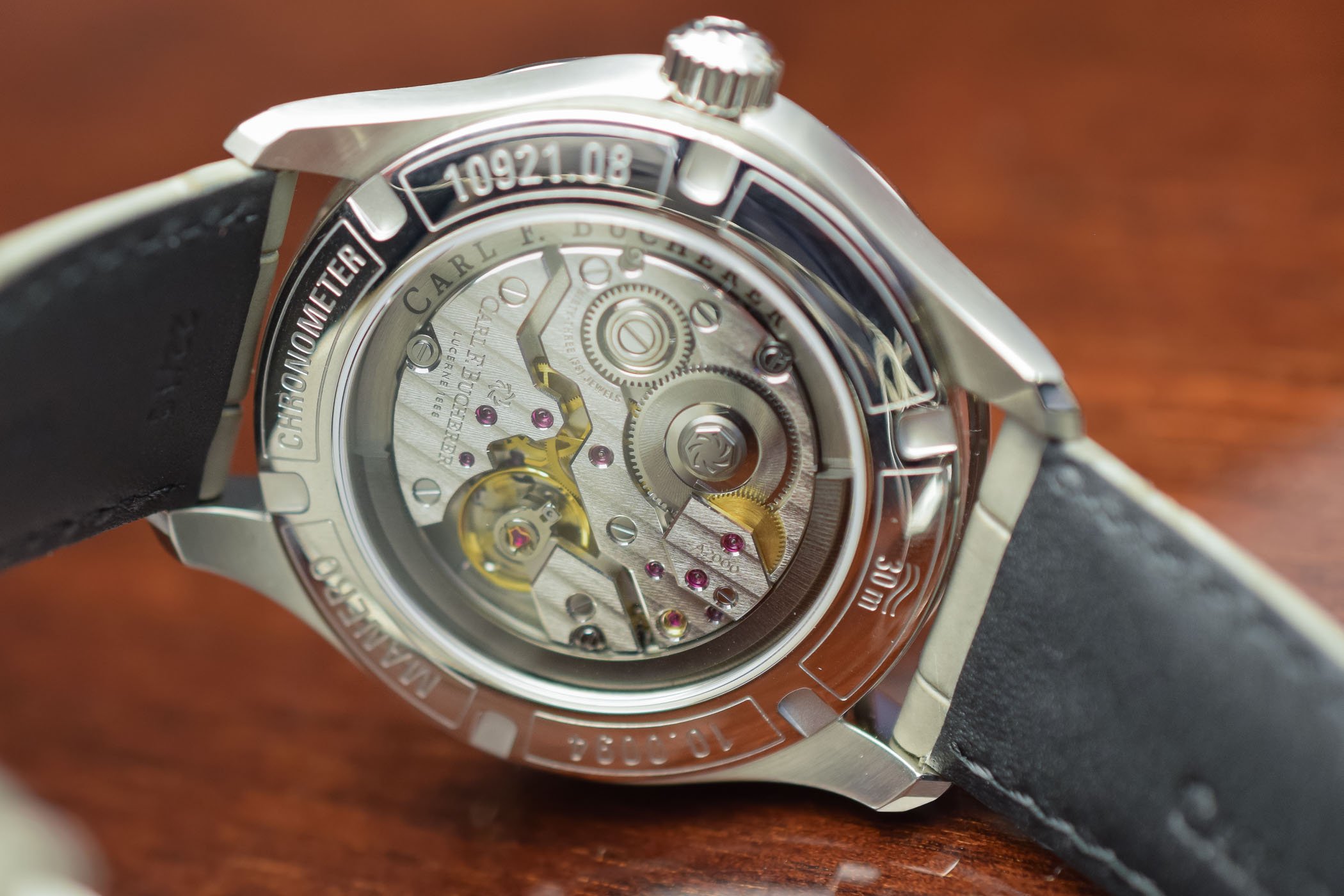
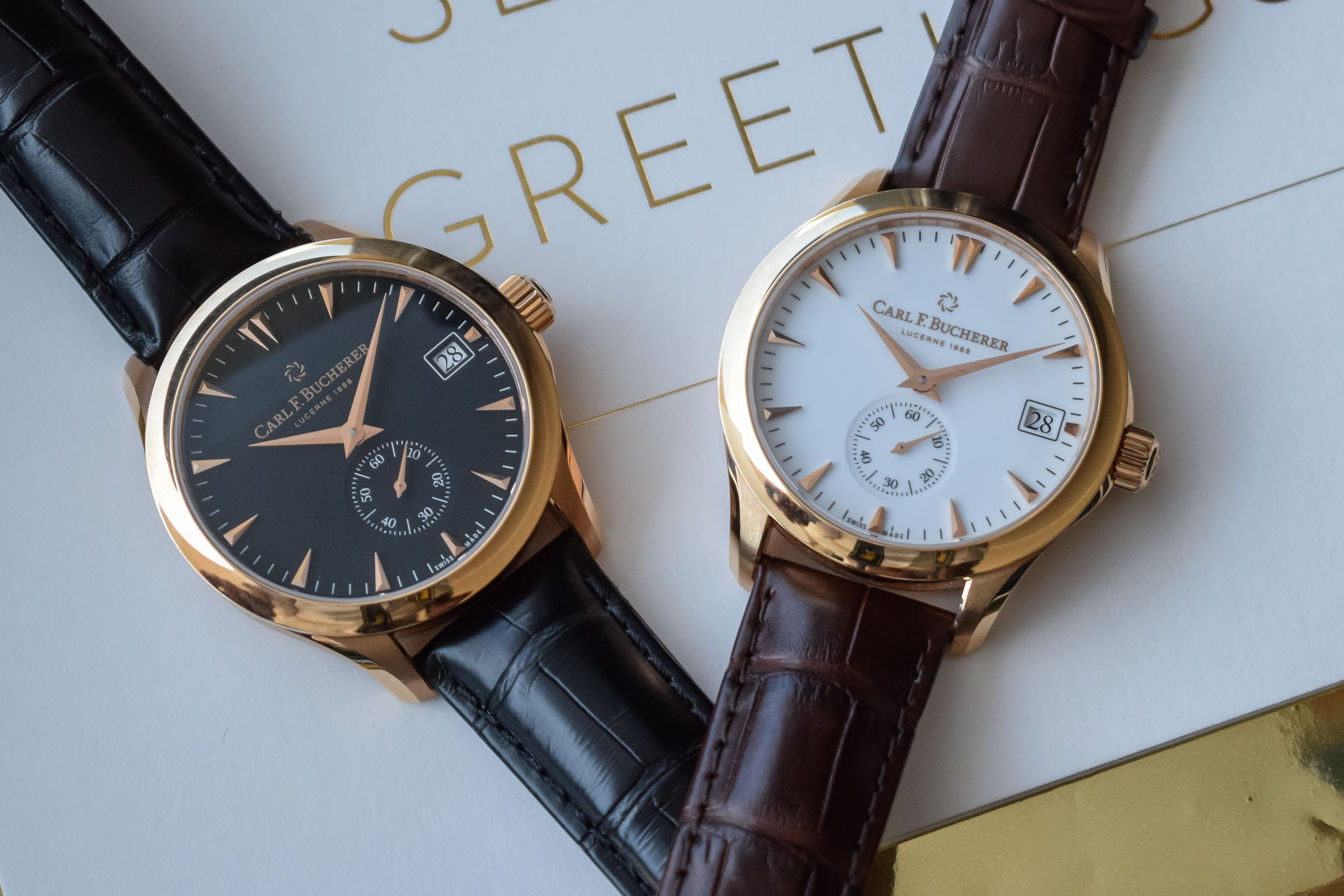
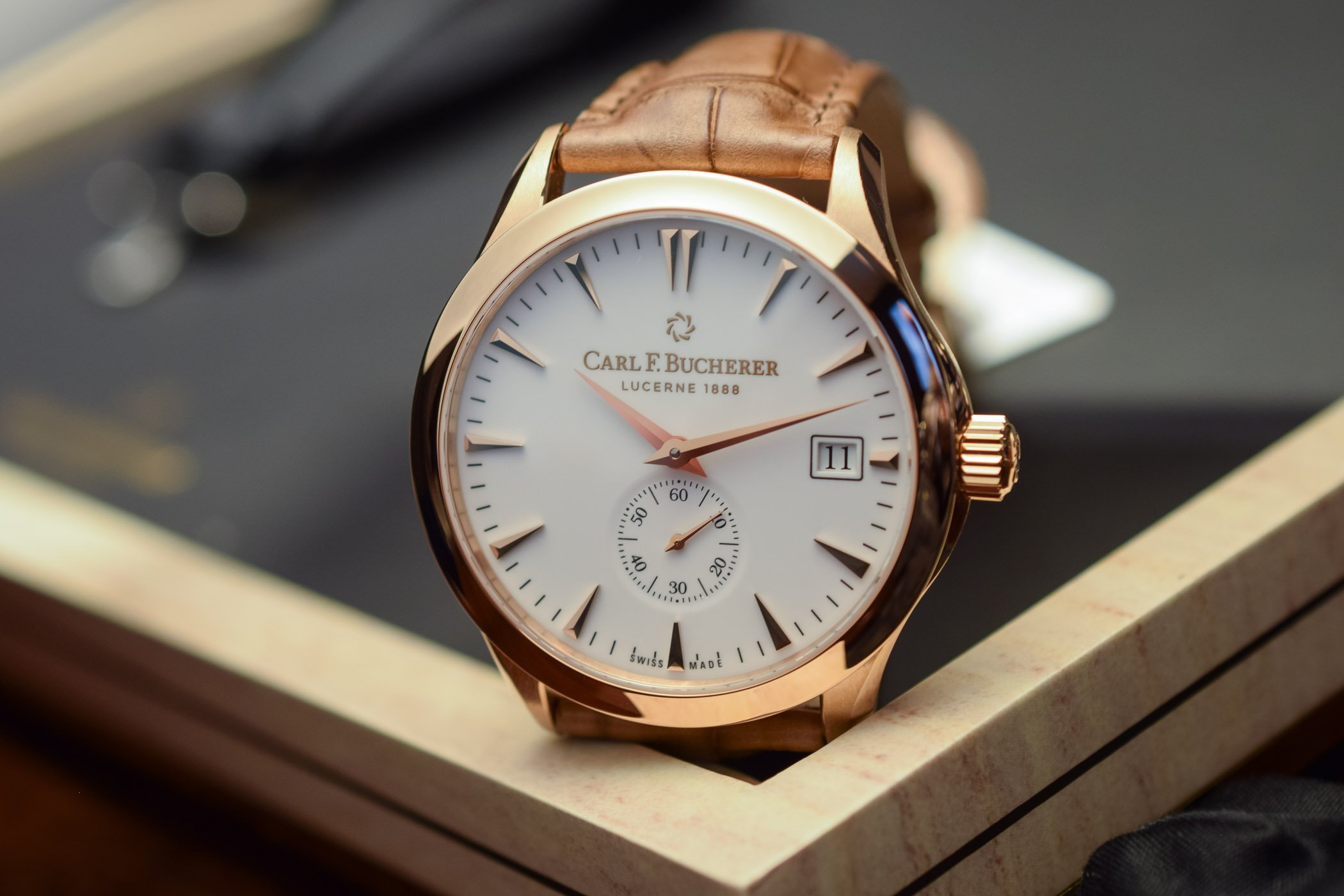
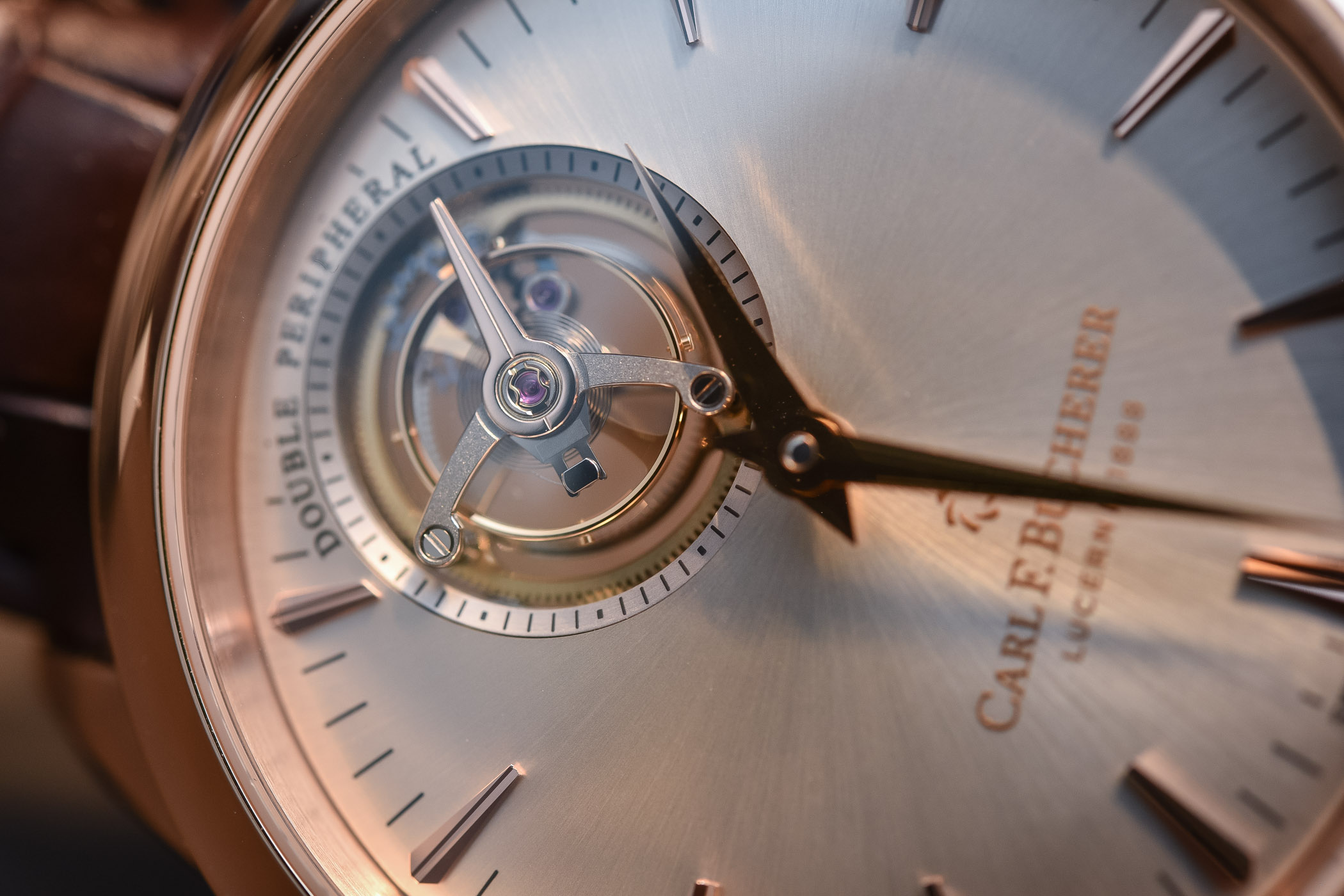
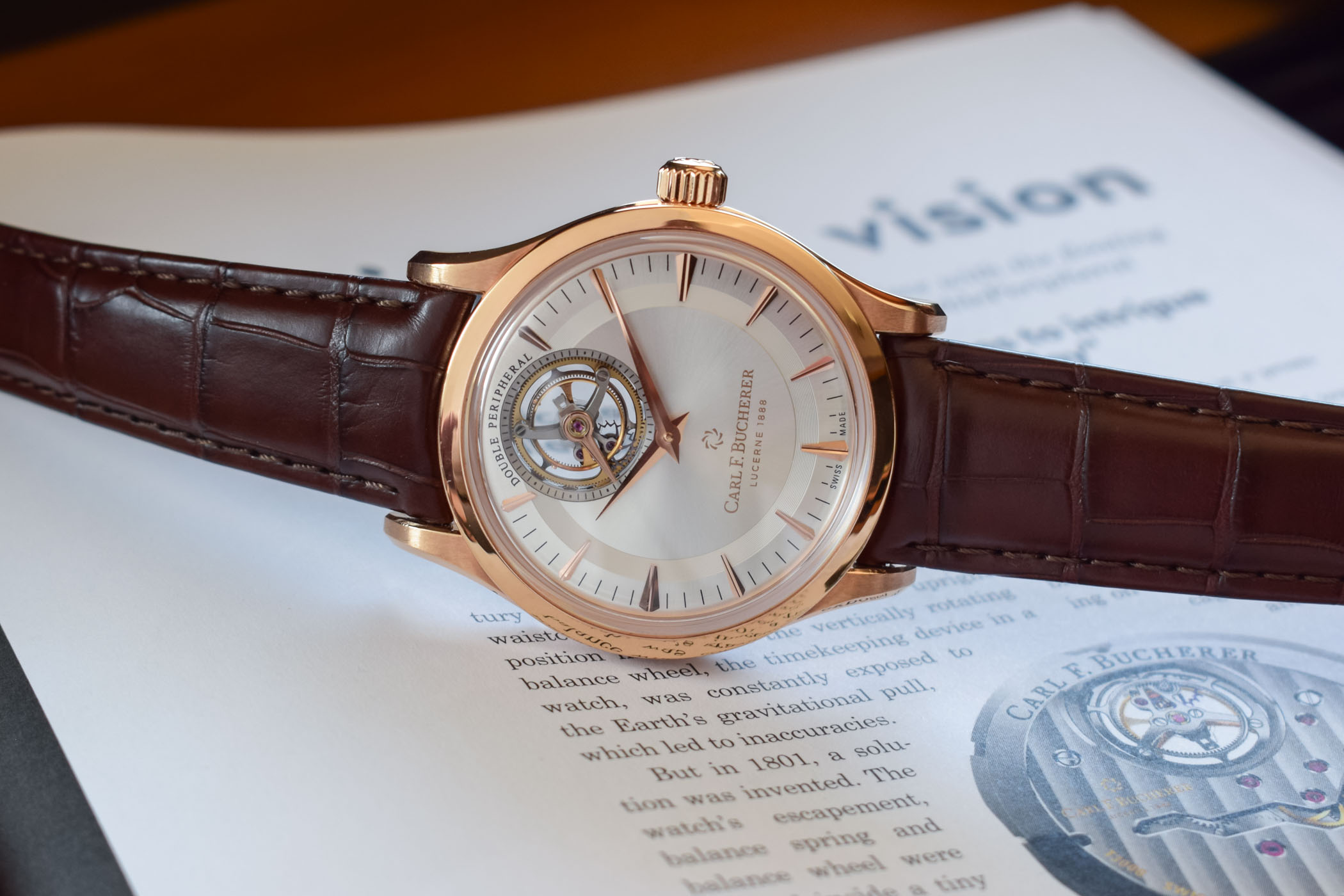



3 responses
When the strap holes are halfway up the lugs, there is something wrong with your lugs!!!
Beautiful. Love these peripheral rotors.
I’ve always loved the look of peripheral rotors, there definitely not used often enough. I also love that even though they are classically styled they’re made in a decent size. I’m not a very big guy but with the size and shape of my wrist the usually 39-40mm size just looks odd on me.